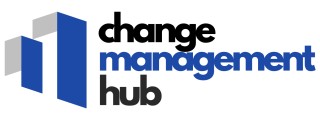
Understanding the National Staff Development Council
Exploring the Mission and Vision
The essence of the National Staff Development Council (NSDC) lies in its commitment to enhancing educational experiences across schools by focusing on professional learning and development. This council sets out standards aimed at empowering educators, teachers, and school leaders to adapt to change, which is crucial in fostering student learning. The NSDC dedicates time and resources towards ensuring that its members have access to the latest research and effective practices necessary for continuous improvement in education.Pivotal Role of Standards in Professional Learning
Standards established by the NSDC play a significant role in ensuring consistent and high-quality staff development. These standards act as a guiding framework for educators and school leaders to follow, fostering a culture of professional development that is deeply rooted in practical and evidence-based strategies. By promoting these standards, the NSDC helps educators shift their focus toward enhancing the quality of teaching, which ultimately leads to better student outcomes.State and National Collaboration
One of the strengths of the NSDC is its ability to facilitate collaboration at both the state and national levels. By organizing annual conferences and workshops, the council brings together educators, school leaders, and policymakers to discuss challenges, share insights, and learn from successful change management initiatives. This cooperative approach allows educators to share knowledge and skills that can be applied within their unique educational contexts.Focus on Continuous Improvement and Development
Understanding that change is a constant in the educational landscape, the NSDC remains forward-thinking in its approach. The council continues to evolve its strategies and frameworks, adapting to the changing needs of schools, teachers, and students. This commitment to continuous improvement ensures that the NSDC remains a pivotal force in the realm of staff development and change management. For a more in-depth understanding of how such collaboration and tools can benefit organizations, consider exploring benefits of appropriate supply chain management software demos.Key Principles of Effective Change Management
Core Concepts in Change Strategies
In the realm of change management, understanding the fundamental principles that guide successful transformations can make a significant difference. At the heart of these principles lies an emphasis on structured approaches which prioritize people and processes. Recognizing the importance of staff development, these strategies aim to enhance the knowledge, skills, and capabilities of educators and school leaders alike. A crucial aspect is fostering professional learning environments where members are encouraged to actively engage, reflect, and adapt to new information. By prioritizing continuous learning, schools equip their staff with the necessary tools to navigate change effectively. This involves creating strategic plans that align with the developmental needs of both teachers and students, ensuring that school leaders are prepared to support these evolutions. Another key principle is the establishment of standards and assessments, such as those developed by the national staff development council. These guidelines are designed to ensure that educational institutions not only meet state requirements but also strive for excellence in student learning outcomes. Whether it's through annual conferences or local meetings, sharing best practices and innovations is vital for driving forward progress in change management. Finally, time management plays a significant role in the effective implementation of change. Allocating sufficient time for professional development, assessment inventories, and staff collaboration is essential in maintaining momentum and achieving success. For a deeper understanding of how these principles operate within the wider competitive landscape of change management, consider exploring this comprehensive guide. This resource sheds light on how organizations can effectively position themselves in achieving transformational goals.The Intersection of Staff Development and Change Management
The Symbiotic Relationship Between Training and Change
When examining the connection between staff development and change management, it becomes evident that the two are deeply intertwined. The primary objective here is to enhance the knowledge, skills, and abilities of educators, ensuring they are well-equipped to manage and implement changes within their schools and classrooms. Professional learning is at the crossroads, playing a critical role in successful change initiatives.
The National Staff Development Council (NSDC) emphasizes the importance of professional development in managing changes effectively. This organization's standards are designed to foster continuous learning, supporting school leaders and teachers in adapting to new methodologies and practices. They hold the belief that when educators engage in high-quality professional growth, it directly impacts student learning positively.
Professional learning opportunities offered by organizations such as the NSDC ensure that educators are better prepared for transitions and reforms. Through regular workshops, annual conferences, and a supportive network of fellow members, teachers are empowered to participate in meaningful change processes. The focus is not just on adopting new strategies but on understanding their implications for student learning and the overall school environment.
Moreover, the integration of an assessment inventory helps in identifying the specific needs and challenges that educators face, tailoring professional development to address these issues effectively. With such a structured approach, the collaboration between staff development and managerial change becomes a driving force in navigating change successfully.
For those interested in exploring practical frameworks and tools that aid in change implementation, such as the fishbone diagram, further resources can be found in the change management hub.
Challenges in Implementing Change Management
Overcoming Hurdles in Change Management Implementation
Implementing change management strategies is no small feat, especially in educational settings where the stakes are high. Challenges arise at every turn and require careful navigation to ensure successful outcomes. Here we delve into some of the key hurdles faced and potential measures to address them. Educators and school leaders often encounter resistance from staff members who are comfortable with the status quo. This resistance can stem from fear of the unknown or anxiety about increased workloads. To mitigate this, the National Staff Development Council highlights the necessity of open communication and professional development opportunities. By fostering a culture of professional learning where educators feel supported, resistance can be diminished and change can be embraced more readily. Time constraints are another significant challenge. With teachers and school staff already stretched thin, finding the time for development programs while maintaining daily responsibilities is daunting. Therefore, integrating development into regular school activities can help manage time efficiently. Schools that have successfully done this often report enhanced professional learning without sacrificing essential teaching time. Moreover, aligning change initiatives with existing standards can be cumbersome. Employers must ensure that new practices enhance rather than hinder the education standards upheld by the national and state boards. By involving educators in the planning stages of these initiatives, it ensures that their knowledge and skills contribute to the design of these standards, fostering a sense of ownership and relevance. Assessment and ongoing evaluation also play a crucial role. Regular assessment inventories help track progress and adjust strategies as needed. Understanding these metrics assists schools in adapting their approach, ensuring that the students' learning opportunities improve and educators are consistently developing their professional capacities. Overall, while the path to effective change management may be fraught with challenges, by leveraging supportive measures from councils and engaging with dedicated professional development, educators can drive forward meaningful change within their schools. Taking into consideration the tailored needs of students and the insights from educational leaders, future trends can shine a light on a path to sustainable development in education.Case Studies: Successful Change Management Initiatives
Examples of Triumph in Change Management
Examining successful change management initiatives provides valuable insights into how the principles discussed earlier come to life. Here are some illustrative examples, shedding light on the positive impact of well-executed strategies.- Revamping Professional Learning Standards: In states seeking to align their professional development strategies with the National Staff Development Council (NSDC) standards, initiatives have flourished. Schools have adopted comprehensive learning plans, integrating professional learning communities into their regular routines. This approach has empowered educators and led to measurable improvements in student learning outcomes.
- Statewide Teacher Development Programs: In efforts to enhance teaching quality, several states have rolled out extensive teacher development programs. These programs focus on equipping teachers with both the knowledge and skills required to meet current educational challenges. By fostering a culture of continuous professional development, school leaders have seen substantial progress, notably in students' academic performances.
- Council-Driven Workshops: National school councils have contributed significantly to change management through annual conferences and workshops. By bringing together educators, board trustees, and other stakeholders, these events facilitate the exchange of best practices and foster an environment that encourages innovative educational strategies.
- Streamlined Assessment Processes: Incorporating new assessment inventories has allowed some schools to identify gaps in student learning efficiently. Through a collective approach, educators have used these insights to tailor their teaching methods, leading to improved student engagement and knowledge acquisition.
Future Trends in Change Management and Staff Development
The Path Ahead: Evolving Dynamics in Change Management and Staff Development
The interplay between change management and professional development is set to navigate through several transformative shifts as we look towards the future. This journey will uncover new dynamics that will continuously reshape the landscape of education and organizational improvement.- Integrating Technology: The role of technology in facilitating both staff development and change management is anticipated to expand. With schools and educational institutions increasingly leveraging digital tools, the National Staff Development Council must consider how these technologies can support professional learning while addressing varying standards and learning needs of both teachers and students.
- Customized Learning Pathways: There's a growing trend towards creating personalized learning experiences for educators. This will help teachers develop their professional skills at their own pace and according to their unique needs, ultimately benefiting the students' learning experience. It could mean incorporating more tailored learning modules in staff development programs.
- Collaborative Communities: The future will likely see stronger emphasis on building collaborative communities that enable educators and school leaders to share knowledge and best practices. Professional learning communities might evolve, encouraging educators at different levels—local, state, and national—to engage in ongoing professional dialog that aligns with broader development goals.
- Measuring Impact: Developing robust methods to evaluate the effectiveness of change initiatives will become crucial. Utilizing assessment inventories to gather feedback will not only inform future strategies but also ensure that these initiatives are genuinely enhancing student learning and professional growth.













